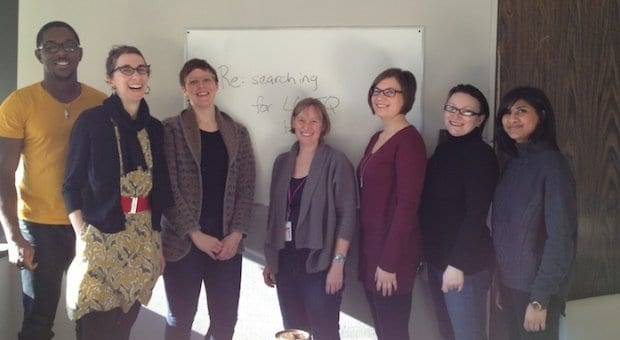In the research world, as in real life, bisexual people have often found themselves invisible — lumped alongside their gay or straight companions, depending on their partner at the moment. But a research team at Toronto’s Centre for Addiction and Mental Health is working to help change that.
The Re:searching for LGBTQ Health team, led by Lori Ross, has focused a significant amount of its resources on looking into a part of society that, until recently, has rarely been studied on its own. Of the group’s 10 active projects, four are related to bisexuality, looking at issues as diverse as mental health, sexual behaviour and drug use.
“When you look at ‘LGBT,’ the ‘B’ has been very neglected,” Ross says, adding that the existing body of research indicates bisexuals have it worse than their gay or straight peers in several areas of health.
“Mental health outcomes in particular,” she says. “Depression, anxiety, suicidality, drug use . . . I’m interested in how social exclusion fits with that.
“For gay and lesbian people, having a community buffers the effects of homophobia; a lot of bisexual people don’t have that community.”
Ross — co-author of a book called Where Is the ‘B’ in LGBT Parenting? — is the lead researcher on a study of postpartum depression among “visible and invisible sexual minority women.” In other words, it compares the outcomes for new mothers who are in a homosexual relationship with those who have been with a same-sex partner in the past but are having a baby with a partner of the opposite sex.
The study will follow its subjects from late-term pregnancy into the first year post-childbirth and should wrap up in about two years. Having previously worked on a smaller sample study, Ross’s hypothesis is that invisible sexual minority women will experience higher rates of postpartum depression.
“The exclusion experienced by invisible minorities isn’t well understood. For women, the moment of getting married and having a baby is the ultimate heterosexual moment. The invisibility is really acute.”
Ross is also co-authoring a new study with Nathan Smith, who works as an associate professor in educational psychology at the University of Houston. Their research will look at 600 bisexual men in three cities (they are still seeking participants in Montreal) to determine the specific predictors of HIV risk among that group. The study will collect data about participants’ behaviours, attitudes and stresses through an online questionnaire and should conclude in less than a year.
“There’s not a lot of research into bisexual individuals in the context of HIV and risk for HIV, but from the literature that does exist, bisexual men tend to have greater risk factors, higher substance-use rates and higher numbers of sex partners,” Smith says, noting that bisexual men tend to smoke more and have more mental health concerns. His previous research found they are also more likely to engage in self-harm, such as cutting.
Smith says he believes bisexual men have been poorly served by being lumped in with gay men in most research, a prejudice that exists in research as well as in the community as a whole. The same thing has traditionally occurred with research into bisexual women, says Margaret Robinson, another member of the CAMH team.
“Counting us as lesbians overrides our identities and impairs our ability to distinguish between issues common to queer women in general and those specific to bi women,” she tells Xtra in an email. “In fact, on issues such as depression, anxiety, suicidality and violence, combining us with lesbians actually masks bisexual women’s health disparities.
“So while bisexuals have participated in research, we haven’t had many benefits in terms of information about our health that we can use in our communities and our activism.”
Robinson is working on a study that will compare cannabis use among bisexual women to that of their straight and lesbian peers, a topic that hasn’t been studied in Canada.
“US studies show that bi women use cannabis at a rate three to five times that of straight women and 1.2 to three times that of lesbians,” she says. “And a US longitudinal study showed that differences in cannabis use start as early as age 14. But there’d been no Canadian studies done, and Canadians have a different history with cannabis than Americans do.”
Robinson’s study involves discussions with varied focus groups as well as data collected by the team in previous research. She says she’s proud to be doing pioneering work on issues that can help those in her community and grateful for the people she works alongside.
“What our studies have in common is that we take people’s identities very seriously,” she says. “Many of the people on our team are bisexual, so we know what it’s like to feel erased . . . My bi community has seen me through a lot of rough times. I welcome the chance to give something back.”


 Why you can trust Xtra
Why you can trust Xtra


